John F. Kennedy was the 35th President of the United States, and served in office for little longer than two years; from January 1961 until his assassination on 22 November 1963.
His burial took place at the Arlington National Cemetery where later on, a permanent site replaced the temporary grave and an Eternal Flame was used during the actual burial service. The location for the burial service was proposed by Kennedy’s friend, architect John Carl Warnecke, who had suggested that the President had admired the peaceful ambiance of the place; the two of them had visited the site earlier that year.
The proposal, though opposed by some relatives, was accepted by the First Lady, Jacqueline Kennedy. Attorney General Robert F. Kennedy, the younger brother of John Kennedy, visited the site and closed the discussions, affirming that Mrs. Kennedy’s wish should be honored. Like his brother, Robert was assassinated a couple of years later and was buried at the same location.
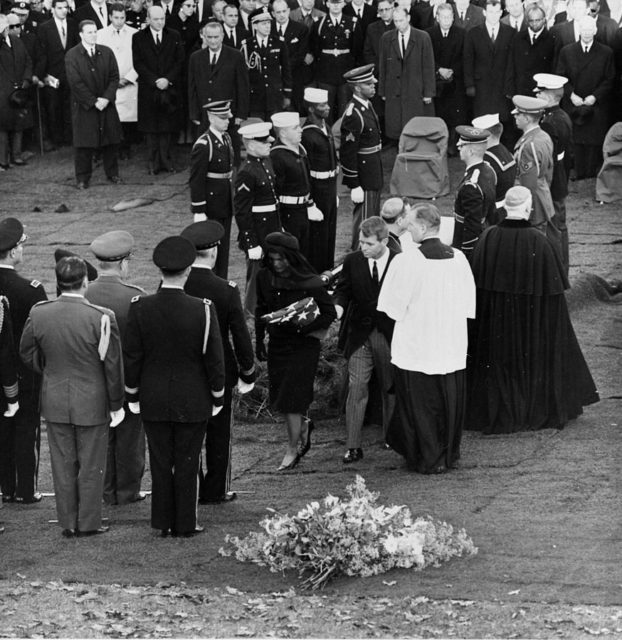
A day before the funeral service, Jacqueline Kennedy requested that her husband’s grave might feature an Eternal Flame. The First Lady thought of the Eternal Flame as she had seen one with the President at the Tomb of the Unknown Soldier at the Arc de Triomphe in Paris; there had been a reference to it in one of Kennedys’ favorite musicals, Camelot, much inspired by the book of T.H. White, The Candle in the Wind.
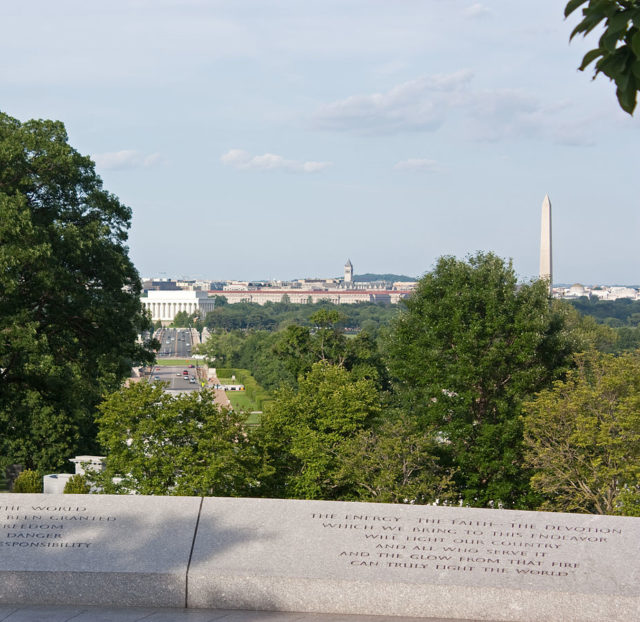
Although there were opposed opinions in regards to the Eternal Flame as well, her wishes were honored and the Eternal Flame was installed overnight. A gas line to a propane tank, just 180 meters away from the torch, was mounted to keep the flame alive once it was lighted; the mechanism of the torch was covered with a mound of evergreens.
The Eternal Flame was ignited at the end of the burial service after Jacqueline Kennedy lit a taper from a candle held by one of the soldiers in service. The same was symbolically repeated by the President’s two brothers, Robert and Edward.
Unfortunately, the Kennedys already had two deceased children, and Mrs. Kennedy expressed the wish that they would also be buried next to their father. After the funeral service, the grave was fenced and work continued to open a space for two more graves. The children were reburied next to their father on December 5, 1963.
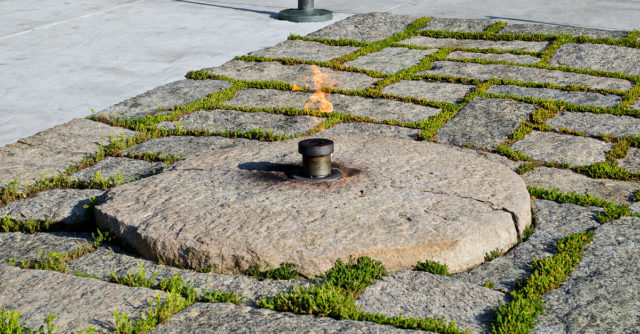
After the burial service, discussions were raised about a permanent memorial, leading to the task being delegated to Kennedys’ friend, John Carl Warnecke. It took the architect a whole year to design a permanent site and during the initial phase, Warnecke consulted with more than 40 other architects, sculptors, stonemasons and other experts. There were many various proposals and ideas, some of which regarded the Eternal Flame as kitschy, and suggested its removal. But after a year of work on the design, Warnecke came up with something simple and kept the Eternal Flame as the centerpiece of the burial site.
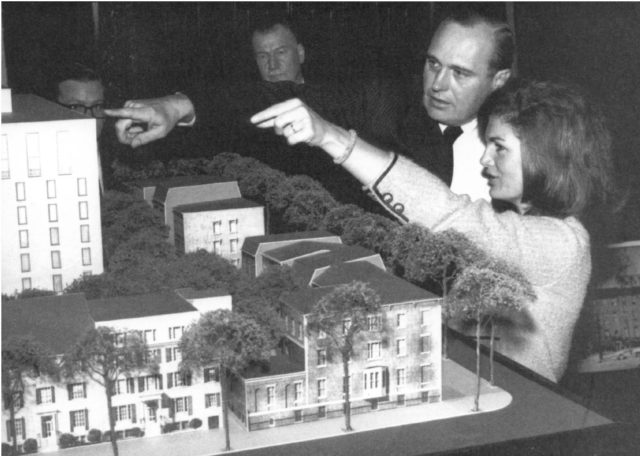
By the summer of 1964, he and his team had also written a massive 76-page research report that concluded that the site was not a memorial or a monument, but a grave. Warnecke would note: “This particular hillside, this flame, this man and this point in history, must be synthesized in one statement that has a distinctive character of its own. We must avoid adding elements that in later decades might become superficial and detract from the deeds of the man”.
The work on the final design extended so much that at one point the architect was approached by President Kennedy’s brother-in-law with a warning to hurry up. Warnecke finally presented his work one year after the assassination and was helped by landscape architects, Hideo Sasaki and Lawrence Halprin. The design had conceptualized walkways and an elliptical overlook. According to its plan, the bodies of the President and his children needed to be moved 6 meters from the place where they were buried. With several interventions, the site allowed an obstructed view of Arlington House and the burial plot was filled in with special granite fieldstone in a flagstone pattern, imported from a quarry on Cape Cod. As it was known that President Kennedy had spent many of his childhood summers at Cape Cod, the stones had a particular relevance.
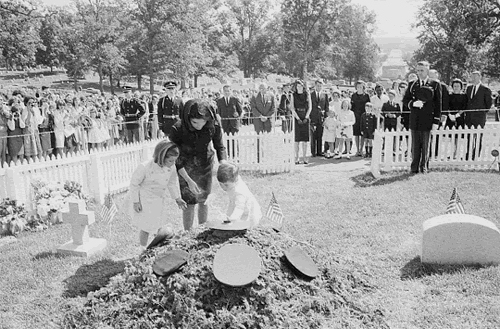
The construction of the permanent John F. Kennedy grave lasted for one more year, and it was opened with little fanfare on March 15, 1967. Just a few days before, the Eternal Flame had been moved from its temporary location to the new site.
The reburial of the bodies took place at a closed ceremony the night before. The whole project cost was $2.2 million; a sum shared among the U.S. government and the Kennedy family.
